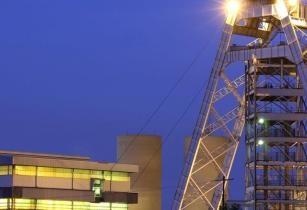Page 1 of 2Jordan Armstrong, mining sector manager at Aggreko looks at how mining companies can improve productivity and manage operational costs
We witnessed a small rise in global commodity prices in the first half of last year. It ended a long running slump and allowed miners, and their creditors, a small sigh of relief. Gold had its best year in decades, silver saw a nearly 50 per cent surge and in July platinum had its best monthly performance since 2012 .
However, miners can’t rely on these surges for profits and realise that improving efficiencies, cutting operational costs and reducing debt continue provide more surety. Operating costs are what drive investors and minimising these has positive impact on growth across the industry. The global decline in recent years has seen a culture shift, with profit margins front of mind during every purchase or sale. Every dollar counts.
We have seen this within our own relationships with mining companies. Outsourcing mine power or HVAC equipment was traditionally based on an executive’s personal preferences and a 5-10 per cent saving didn’t matter. Now procurement principles have precedence, with a strong cost-cutting agenda and reassessing a mine site’s energy and temperature control strategies to seek efficiencies should be an ongoing process.
Flexibility is becoming increasingly vital to an operation and is a key factor in improving efficiency and productivity. A rise in risk-averse investors who are unwilling to commit to long term operations means more and more projects are likely to be five years or less. In these cases, investing time and money in establishing permanent infrastructure is no longer justifiable. For example, more mines are adopting ‘virtual pipelines’, where trucks have replaced pipelines; and many are depending on on-site power plants, which have long been a more economical option compared to permanent grid connection, particularly in remote locations.
The flexibility of mobile power means that generators can be mobilised quickly and transported by sea, road and air to the most remote and extreme locations. This enables miners to widen their search for new, lucrative locations and thereby appease demanding investors.
Flexibility also allows for greater scalability, creating an opportunity to capitalise on increased production when demand requires it and save on energy costs when it falls – future proofing a mine against commodity price and other variables.
There’s also value in the increased reliability of on-site power. Unplanned disruptions jeopardise health and safety, the ability to meet customer deadlines and decreases efficiency, which are all key factors in cost saving.




